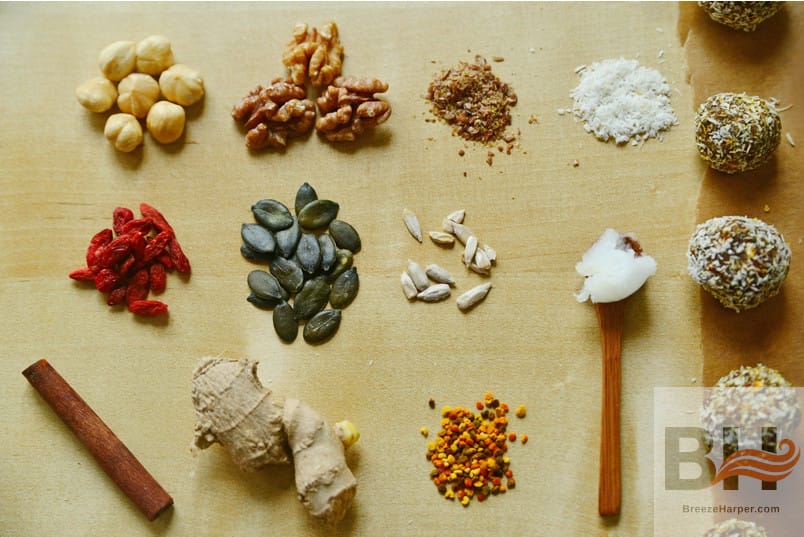I Don’t Have to Force 107g of Protein a Day to Be Strong: A Perimenopause-Midlife Nutrition Reframe

Lately, there’s a lot of buzz around hitting 100 to 110 grams of protein per day for women over 40, especially if they’re resistance training. And while I respect where that advice is coming from—sports science, muscle retention, recovery research—I want to share a different perspective based on my lived experience:
I don’t have to force that much protein to thrive.
In fact, when I’ve tried to hit that number every single day, I’ve felt worse, not better.
My Lived Experience: Whole Food Veganism, Pregnancy, and Strength
During all four of my full-term pregnancies, I could never hit the high-protein targets that were often suggested. My body simply didn’t want that much. But I still had four healthy home births, with babies weighing 9 to 10 pounds.
How?
Because I focused on nutrient density and absorption, not protein volume.
- Daily stinging nettle infusions
- Hemp, chia, tempeh, tofu, legumes
- Sautéed greens and a wide variety of plants
- Vegan DHA at 2–3x the suggested dose
- Liposomal Vitamin C, Vitamin D3 + K2, a high-quality prenatal
- Mineral water and intentional rest
- Resistance and cardio workouts 4x/week
That’s what worked. And I still eat this way now as I navigate perimenopause.
What Happens When I Try to Eat 107g of Protein Now?
So, I did the calculations of how much protein I supposedly need per day for my body weight. It came out to roughly 107g of protein per day.
When I attempt to eat that much protein…
I feel awful.
Physically uncomfortable. Emotionally burdened. Spiritually disconnected from my body’s intuitive rhythm.
And I know I’m not alone. Many of the women I coach feel the same way:
- Bloated or heavy from trying to cram in extra protein
- Stressed by the constant calculation of macros
- Disconnected from the joy of eating
This isn’t a failure. It’s a signal. Our bodies are wise.
The Problem With the "Bodyweight x Protein Gram" Rule
That common formula—multiplying your bodyweight by a set number of grams to determine your daily protein intake—often comes from research focused on:
- Young male athletes
- Animal-protein-based diets
- Short-term muscle metrics
It rarely considers:
- Plant-based bodies
- Women over 40
- Hormonal fluctuation and gut absorption shifts
- Emotional relationships to food
To be honest, I’ve …gotten sick… of non-stop Facebook ads showing 20- or 30-something cisgender-presenting men explaining how to eat and be fit—as if it works for everyone. Or, I’ll see mid-life men presenting themselves as fitness gurus, recommending more cardio and more protein without ever acknowledging that they don't go through perimenopause or menopause.
They rarely disclose their positionality. Why would they? The name of the game is to sell services, products, and build brands. But those models often don’t serve me—or the women I coach.
One of my friends, J, has been going to a gym for seven months. She's perimenopausal, and her male coach keeps telling her to eat more protein and do more cardio. Despite her saying the plan hasn't worked—and that she’s gained weight and feels less strong—he’s not listening. It wasn’t until she spoke to me that she understood how perimenopause could be shifting her metabolism, digestion, and hormonal profile.
I reminded her: find someone who listens and acknowledges where you are in your body’s timeline.
Also, research shows that muscle protein synthesis in older adults is impacted more by resistance training and amino acid quality than sheer volume of protein.
What I Focus on Instead
Before I even eat a full meal, I begin by waking up my digestive fire with a custom-crafted tonic—a kind of botanical orchestra designed to support midlife vitality from the inside out. Each ingredient in my morning drink plays a role, like instruments in harmony, working to help me feel clear, calm, and strong through the ever-shifting landscape of perimenopause:
- Apple cider vinegar (1.5 tbsp): Stimulates stomach acid production, prepping digestion for nutrient absorption and helping to stabilize blood sugar.
- Stinging nettle infusion (12 oz): A mineral-rich tonic high in calcium, magnesium, and iron—key for bone health, energy, and replenishing what midlife hormones can deplete.
- Fresh ginger (1.5"): Anti-inflammatory and warming, it enhances circulation, reduces nausea, and helps activate the digestive tract.
- Fresh papaya (4 tbsp): Contains the enzyme papain, which gently supports protein digestion—especially helpful when enzyme production declines with age.
- Chlorella (1 tsp): Binds to heavy metals, supports detox pathways, and adds chlorophyll-rich alkalinity to counter stress-related acidity.
- Stevia leaf powder (1/2 tsp): Not the extract, but whole powdered leaf—providing gentle sweetness without a glycemic spike, and supportive to pancreas and gut microbiota.
- Spirulina (1 tsp): A rich source of plant-based protein and essential amino acids, plus B vitamins and iron for sustained energy.
- 7 mushroom blend (1 tbsp): Reishi, cordyceps, lion’s mane, and others support adrenal health, immune resilience, and mental clarity.
- Ginkgo (1 tsp, Cherie Sweet Heart): Enhances cerebral blood flow, cognitive sharpness, and focus—powerful during hormone-related brain fog.
- Fresh turmeric (1.5"): Anti-inflammatory root with curcumin to soothe joints, regulate immune response, and support the liver.
- Ashwagandha root (1/3 tsp, Cherie Sweet Heart): Adaptogenic herb known to reduce cortisol, support thyroid function, and increase stress resilience.
- Sol Raiz Maca powder (1 tsp): A hormone-balancing root from the Andes that nourishes the HPA axis and helps counter fatigue and libido changes.
I take Meno-Chill with probiotics first thing in the morning on an empty stomach, as required, and wait at least 25 minutes before consuming anything else. This helps set the stage for optimal probiotic absorption and gut support. Later in the day, I may also enjoy probiotic-rich foods like vegan kefir drinks to nourish my gut microbiome and support hormonal balance.
For me, 70g of protein a day feels good. My energy, mood, and muscle tone are strong. Instead of chasing numbers, I focus on:
- Amino acid diversity from seeds, legumes, fermented soy, grains
- Meal-based protein anchors: 20–25g per meal
- Muscle activation through resistance training
- Micronutrient absorption (Vitamin D, magnesium, zinc, iron)
- Digestive health: fermented foods, bitters, fiber
- Joy and ease around eating
What I Know Works for Me
- Resistance train 3x/week
- Eat tempeh, seeds, greens, legumes
- Use herbal infusions like nettles or oatstraw
- Supplement with DHA, D3, magnesium, and Liposomal Vitamin C
- Sleep well and feel emotionally grounded
So I trust that I’m meeting my protein needs functionally, even if not numerically.
In Summary
My body is not a calculator. It’s a living, intuitive system.
I can be strong, resilient, and hormonally balanced without cramming 110 grams of protein into my day.
I build muscle and preserve bone density through smart training, quality nutrition, and rest.
I trust my lived experience. And I invite others to explore and trust theirs.
Let’s stop measuring success in grams, and start honoring it in strength, energy, and peace.
What about you?
If you’re navigating protein intake, resistance training, or nutritional changes during perimenopause or menopause, I’d love to hear from you.
What’s working for you? What challenges are you facing? How are you redefining nourishment in midlife?
Share your story. Let’s grow this conversation together.
